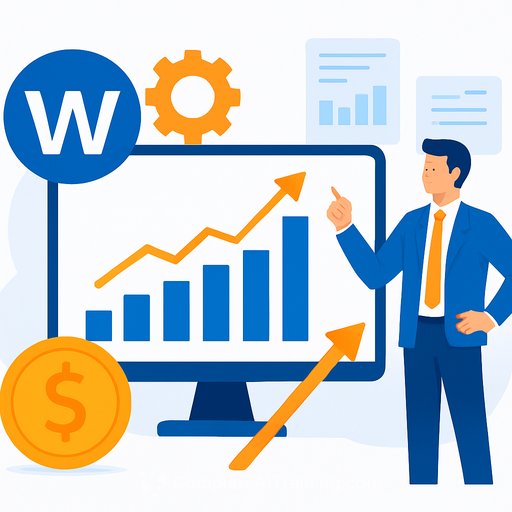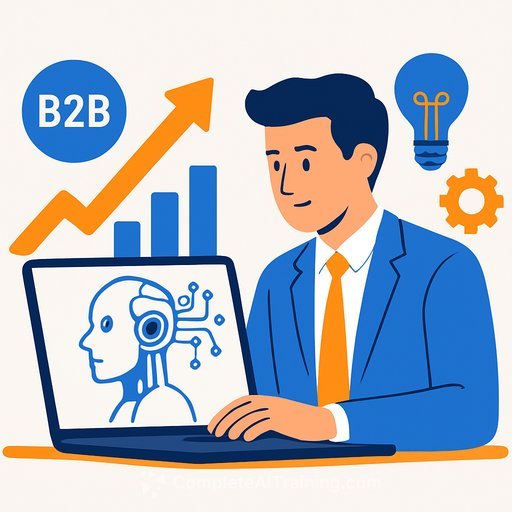Semrush One puts AI visibility and SEO in one place
AI answers are stealing attention from traditional search. That means fewer classic blue links and more "Who shows up in ChatGPT, Gemini, or Perplexity?" Semrush's new platform, Semrush One, is their answer to that shift-combining SEO data with AI discovery insights so your brand doesn't get buried.
Semrush says its own "AI share of voice" nearly tripled in a month after adopting the system. If true, that suggests language models react faster than standard SEO cycles. The takeaway for marketers: your visibility plan now has to include AI surfaces, not just Google rankings.
What Semrush One actually does
The platform merges classic SEO tracking with AI visibility analysis. It shows how often your brand appears inside AI discovery engines like ChatGPT, Google's Gemini, and Perplexity.
"Semrush has always helped marketers see where they stand, and now we help them shape what comes next," said Andrew Warden, Chief Marketing Officer at Semrush. "By combining SEO and AI into one intelligence layer, Semrush One gives marketers the power to influence every moment of discovery and turn insight into performance. It's the advantage modern marketing was missing."
Under the hood, Semrush cites more than 808 million domains tracked and trillions of backlinks in its datasets. There are three tiers-Starter, Pro+, and Advanced-for growing teams. An enterprise tier called AI Optimization adds customizable prompts and model-level controls for bigger orgs that need governance.
Pricing and who it fits
Entry pricing starts at $165/month. For larger brands that already pay for several tools, consolidating may make sense. For smaller e-commerce teams, that price could be a stretch-especially if you're still getting fundamentals in order.
Bill Wagner, CEO of Semrush, framed the shift clearly: "With the increasing adoption of LLMs and the rapidly evolving world of search, online brand visibility has become a boardroom topic. We're excited to build on nearly two decades of industry leadership in search and empower marketers to take control of their visibility in the new era with Semrush One."
What the early results mean (and don't)
Semrush reports it nearly tripled its own AI visibility within one month. That's promising, but it's a first-party case. It's unclear whether similar gains hold for smaller sites or brands in crowded categories, where authority and coverage vary.
AI systems also shift quickly. What boosts your visibility this month might decay next quarter. Plan for ongoing testing, not one-time wins.
How marketers can act this week
- Benchmark today. Check how your brand appears in ChatGPT, Gemini, and Perplexity for your top queries. Log where you're cited-sites, pages, and formats.
- Prioritize "citable" content. Publish clear, source-worthy pages: definitions, comparisons, pricing, data, FAQs. Make them scannable and unambiguous.
- Strengthen authority signals. Earn references on trusted sites, update listings, and keep product feeds accurate. Broken data kills AI answers fast.
- Use structure. Add schema where it helps (FAQ, Product, HowTo). Consistency across site, docs, and feeds increases your odds of being cited.
- Track AI share of voice. Whether through Semrush One or scrappy audits, measure your presence across AI engines monthly and adjust.
- Tighten brand facts. Create a canonical "About" and product spec hub. LLMs repeat what's common and consistent.
- Test prompts. Run regular checks with neutral prompts and buyer-style questions. Note which pages get referenced and why.
Should you buy now?
Consider Semrush One if you manage multiple brands or regions, compete on non-brand terms, and have the team to act on insights weekly. The unified view across SEO and AI discovery can tighten your feedback loop.
Hold off (or run a trial) if your site still lacks clear product pages, category depth, or credible references. Fix the basics first; AI visibility leans on the same foundations that drive organic search.
Key questions before you commit
- What will we stop doing to fund this? Where does Semrush One replace existing tools?
- Who owns AI visibility metrics and the weekly actions that follow?
- Which queries matter most for AI answers vs. classic SERPs-and how will we report both?
- How will we validate "AI share of voice" against traffic, leads, and revenue?
- Do we need enterprise controls (prompt libraries, approvals, data policies) now or later?
The bottom line
AI answers are becoming a default gateway to information. If your brand isn't cited, you're invisible-no matter how clean your traditional rankings look.
Semrush One is a focused move to bring that visibility into one dashboard. If you have the fundamentals, it can help you move faster. If you don't, fix those first-then consider adding AI visibility to your stack.
Level up your team
If you're building practical skills for AI-driven marketing, explore the Marketing Specialists certification here: AI Certification for Marketing Specialists. You can also browse role-based options: Courses by Job.
Your membership also unlocks:






